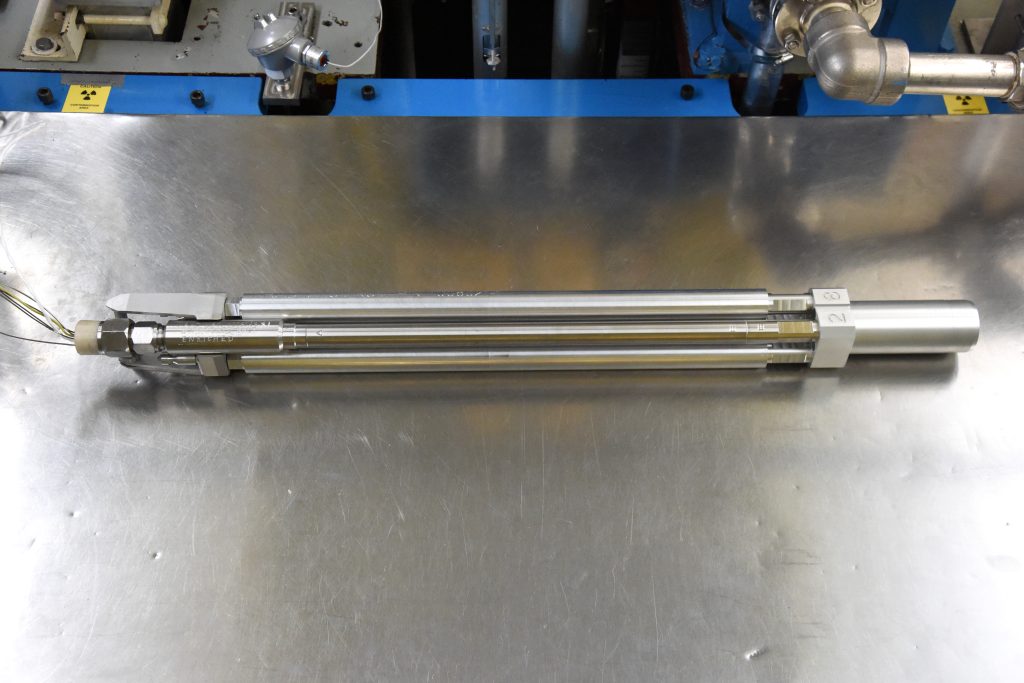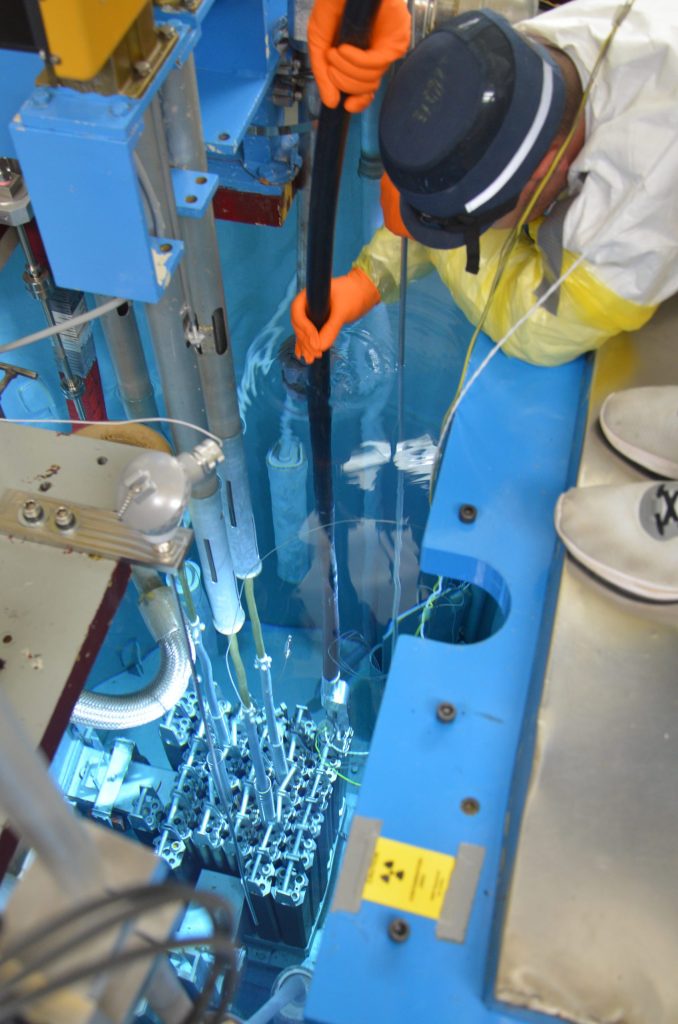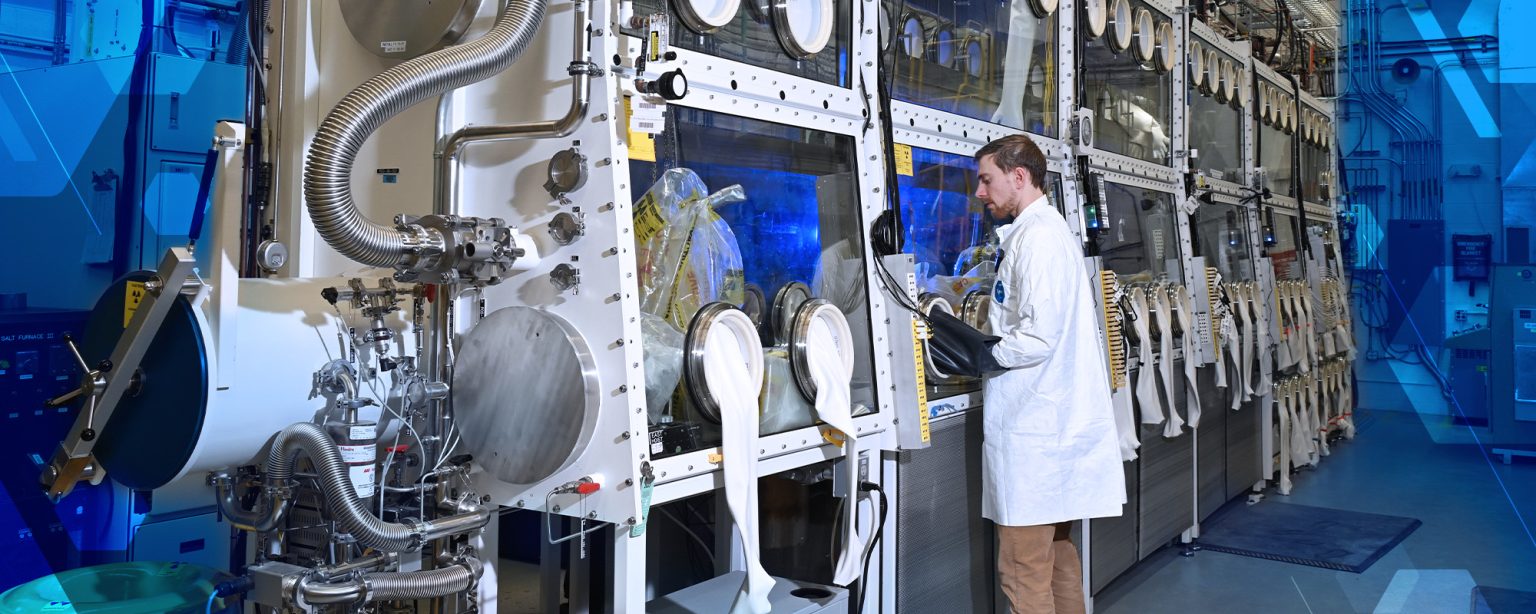For decades, light-water nuclear power plants have provided safe, reliable carbon-free energy in the United States and around the world.
But in the early days of nuclear energy research, light-water reactors were just one of several promising reactor types. Nuclear energy pioneers also designed and tested high-temperature reactor technologies that use gas, liquid metal and molten salt as coolants.
One prototype, the Molten Salt Reactor Experiment, operated at Oak Ridge National Laboratory in the 1960s using a lithium and beryllium fluoride-based molten salt coolant — a design where liquid fuel and the coolant are one and the same. The experiment validated the safety and reliability of a simple reactor type that could efficiently provide electricity and heat for communities and industry. Molten salt reactors could also generate less high-level waste than the current reactors.
Yet, the molten salt reactor’s potential remains largely untapped.
Today, U.S. advanced reactor companies have seized on the need for new, flexible carbon-free energy sources to revisit these long-overlooked technologies, including molten salt reactors.
Now, for the first time, researchers at Idaho National Laboratory have synthesized and irradiated a molten chloride salt fueled with enriched uranium. The Molten Salt Research Temperature-Controlled Irradiation (MRTI) experiment is an important step in understanding how fueled molten chloride salt coolants will perform under the intense radiation and high temperatures in a commercial reactor core. The experiment capsule is designed to be flexible and reconfigured to hold other types of fueled salt samples in future irradiations.
First enriched uranium-fueled molten salt experiment since 1960s
MRTI is the first enriched uranium-fueled molten salt experiment — fluoride or chloride — since the Molten Salt Reactor Experiment roughly 60 years ago. (Researchers in the Netherlands are conducting molten salt irradiation experiments with thorium.)

INL researchers successfully conducted a similar, non-fueled chloride molten salt prototype test earlier this year.
“There has not been any recent enriched uranium salt fuel irradiated anywhere to my knowledge,” said Abdalla Abou-Jaoude, a research and development scientist and principal investigator on this project. “People have been doing some irradiations here and there, but they haven’t been fueled.”
The experiment could yield important data for proposed reactor designs in the U.S. For example, TerraPower plans to use a uranium-chloride salt in its Molten Chloride Reactor Experiment to be located at INL.
New use for NRAD
The MRTI experiment is underway at INL’s Neutron Radiography Reactor, or NRAD, a 250-kilowatt research reactor.
Researchers typically use NRAD to visualize irradiation damage to nuclear materials, fuels or other specimens by bombarding them with neutrons, similar to the way X-rays are used to create images of bones.

For the MRTI experiment, researchers are using NRAD to study the effects of radiation on the fueled molten salt. The capsule containing the fueled molten salt will likely be irradiated within NRAD for several weeks.
Once the irradiation is complete the capsule containing the molten salt will go to INL’s Molten Salt Thermophysical Examination Capability for post-irradiation examination.
“INL has a long history of doing post-irradiation examination on solid fuels,” Abou-Jaoude said. “The Molten Salt Thermophysical Examination Capability will be the first capability for post-irradiation examination on liquid fuels. This type of capability doesn’t exist anywhere else in the world.”
Researchers want to study how the salt affects the wall of the capsule that houses the experiment. The impact of an irradiation environment on corrosion behaviors is not well understood. Irradiation products may also build up along the wall, a process called plating.
Just as important, researchers want to study the gases emitted by the salt. “We also want to know how the properties of the salt — its density, conductivity and viscosity — change as you irradiate it,” Abou-Jaoude said.
The test could be a precursor to a series of experiments using INL capabilities such as the Advanced Test Reactor and the Transient Reactor Test Facility. These tests will further explore how fueled molten salts would perform under the harsh radiation and temperature conditions of a commercial reactor.
The experiment is one of the few times researchers have used NRAD in an irradiation experiment, and it could set a precedent where researchers use the reactor as a test bed before experiments go into the Advanced Test Reactor.
“NRAD is better for high-risk experiments because it’s usually the only experiment in the reactor,” Abou-Jaoude said. “You can shut down the reactor if you need to make an adjustment or if there’s a problem. We should walk before we run.”
The Advanced Test Reactor is much larger and can hold dozens of experiments for months at a time. Shutting it down to make an adjustment for one experiment would compromise other tests.
The project was funded by INL’s Laboratory Directed Research and Development program, which uses INL funds to conduct early-stage research projects. “They went out on a limb to fund this high-risk, high-reward project,” Abou-Jaoude said. “They’ve been very supportive.”
The experiment is attracting international stakeholders, and INL has already signed agreements for potential follow-up experiments that would allow collaborators to irradiate their own molten salt formulations.
“Nobody could do this until now,” Abou-Jaoude said. “I’m hopeful that now that we’ve proven we can do it, more people will be interested.”





